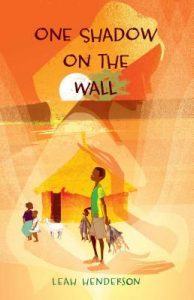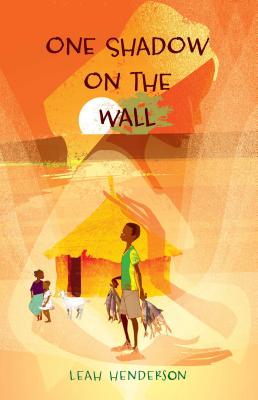craft review by Laurel Holman
 Whether on purpose (planners) or by instinct (pansters), most published novelists have produced stories that conform to a universal story structure. Breaking down a novel into its component parts can be a tremendously valuable exercise for writers still learning the craft and those who are already masters. Save the Cat, a screenwriting guide by Blake Snyder, is one such method for breaking a story down into its essential (and universal) “beats.”
Whether on purpose (planners) or by instinct (pansters), most published novelists have produced stories that conform to a universal story structure. Breaking down a novel into its component parts can be a tremendously valuable exercise for writers still learning the craft and those who are already masters. Save the Cat, a screenwriting guide by Blake Snyder, is one such method for breaking a story down into its essential (and universal) “beats.”
As Jen Jobart explains in this excellent review of Save the Cat, studying the structure of other novels and understanding universal story structure is the key to structuring our own successful novels.
So, after reading our book club’s choice for this month, One Shadow on the Wall by Leah Henderson, a middle grade novel set in Senegal, I set out to analyze this book to see if I could find its structure. To my surprise, I was able to identify every beat. I’ve outlined the beats below. There are spoilers all over, but the analysis made me appreciate the book even more than on a first read.
Opening Image (Beat 1)
- We’re introduced to Mor as he turns away from a friend’s offer to include him in a favorite childhood game of soccer, and toward the vision of his recently departed parents, and their challenge to him to keep the family together, setting up the story problem: Is Mor ready to turn away from childhood and take on the role of family caretaker? Will he rise to the challenge his baay gives him to keep his family together? (“Keep our flock as one,” instructs baay, on p. 10) Will he find a way to fit into his father’s big shoes, literally and figuratively? “They were much too big for him but the only choice he had since losing his own.” (p.45)
Theme Stated (Beat 2)
- We see Mor poking at a python beetle in the dirt, and hear Mor’s baay admonish him, “You are not a python slithering in the dirt, hampering any life that falls across your path. Do not let your hurt turn you sour.” (p.7) For much of the rest of the book, Mor becomes the beetle that the Danka boys (who have been hurt and have turned sour) poke at. His father’s spirit highlights Mor’s transitions between roles when he reminds Mor of the beetle, during an early encounter with Papis, saying, “You are it, and it is now you. Get off this python’s path.” (p.34) The central theme of the book centers on Mor’s journey to decide whether he is the helpless beetle, whether he will “turn sour” and become the one poking the beetle (joining the Danka boys), or whether he will find a third path. The theme is reinforced by baay’s comment (p.23) “But you must find strength, my son. Not bitterness.”
Set-Up (Beat 3)
- We are introduced to Mor’s sisters, friend of the family Tanta Coumba (and her absent son Cheikh), and Jeeg, the goat.
- We get our first glimpse of Demba (p.24), though we don’t yet meet him.
- We learn a little more about Mor’s parents and how they died, and see him interacting with their departed spirits again.
- Mor has his first encounter with the Danka boys, a local gang that will harass and tempt him throughout the story. He escapes the first encounter with some help from an unknown ally… foreshadowing the B Story (beat 7).
Catalyst (Beat 4)
- Mor’s aunt arrives and reveals she plans to take Mor and his sisters from their home and bring them to the city where they will be split up. Mor wants to stay and keep his promise to his baay, and asserts he can care for them himself, a notion his aunt rejects. He enlists the help of Tanta Coumba to convince Bajjan to agree to a trial period of the summer, giving Mor his chance to prove that he can take care of the family.
Debate (Beat 5)
- Mor explores the question of whether and how he can support the family, with three “try and fail” cycles, (engine repair, sweets vendor, and fisherman) each of which serve to underscore Mor’s inexperience.
- As Mor encounters obstacles, including another encounter with the Papis and the Danka boys (who steal his sweets and his money p. 131-133), we begin to see the secondary theme come to light: Can Mor do this by himself, or does he need help? And if he can’t do it alone, does he fall in with the Danka boys, or does he find another way to enlist the help he needs?
Break into Act II (Beat 6)
- Mor allies with an unlikely mentor, Demba (p. 156), the local “doff,” to become a fisherman. His apprenticeship under Demba, and the challenges and successes that brings, propel us into Act II.
B Story (Beat 7)
- Cheikh’s departure for the daara, (where he has been sent before the story stars), and his return as a member of the Danka boys, is the primary B-Story woven artfully throughout this book. Cheikh’s character is in some ways the “funhouse mirror” counterpoint to Mor. He went to the daara, (the threatened fate of Mor should he fail), where he was hurt and “turned sour,” joining the Danka boys for the protection he desperately needed. As we bounce between the B-Story and Fun and Games, we see Cheikh struggle with the conflict between his loyalty to Papis (who defended him at a time of need) and his childhood friendship with Mor. Will Cheikh defy Papis to help Mor? This dramatic question helps to drive the B-story subplot and create tension throughout Act II and into Act III.
Fun & Games (Beat 8)
- We watch Mor struggle with and gradually overcome his inexperience, with the guidance of Demba and some help from kind members of the community who show him what real help and support looks like (a counterpoint to the type of help and support he would get as a member of the Danka Boys.) Examples: learning to swim, helping the stranded fisherman with his motor, etc.
Midpoint (Beat 9)
- At the end of Mor’s first successful day as a fisherman, he has a celebration with his sisters that night where he proudly feeds them, fulfilling his goal (at least temporarily) of being a provider. (Ch. 19, p. 195-200.) This is a FALSE VICTORY, setting up the reversal of the second half.
- The A and B stories come together as Cheikh shows up at Mor’s house in the middle of the night, immediately after the False Victory celebration, bringing the Danka Boys to Mor’s door, literally. “Mor didn’t dare tell her about Sheikh’s return or that he might have brought the boys to their door…. There was a divide in the road he traveled, and now he had to choose a side.” (p. 214. Note that p. 214 is the exact midpoint of the 429 page book.)
Bad Guys Close In (Beat 10)
- Jeeg is captured by the Danka boys, and Mor must try to save him.
- Cheikh extends the invitation for Mor to join the Danka boys, with veiled threats about what will happen if he does not accept their invitation.
- Mor tries to outwit the Danka boys, as in the scene where he uses small fish and a bit of bread as a decoy (hiding the real fish in his pants, and the coins in his shoes) and it seems to work at first. (“You are a clever player in this game… but is that enough?” the voice of baay asks on p. 277). Mor realizes the Danka boys are not so easy to fool when they attack the market stall of his friend (and buyer) Basmah.
- Conflicts with the Danka boys escalate and the stakes go up as Mor starts saving more money and has more to lose.
All Is Lost (Beat 11)
- Mor’s sister Amina falls ill, and Mor blames himself.
Dark Night of the Soul (Beat 12)
- Facing his failure to keep his sisters safe, Mor joins the Danka. In a nightmarish echo of the childhood joys of his past, he is thrust into a soccer game where he must play on the side of the Danka and witness his old friends being humiliated, the same way Cheikh stood by while he was humiliated by Papis earlier in the story.
Break into Three (Beat 13)
- His brief stint as a reluctant Danka boy brings rewards (the chicken) but at far too high a cost: Demba’s boat is punctured at the first sign of Mor’s wavering. Instead of solidifying his enrollment in the Danka gang, it has the opposite effect. “I don’t want to be a Danka boy,” Mor realizes (p. 354), propelling us into Act III.
Finale (Beat 14)
- Mor devises a plan to shake Papis and his crew for good, enlisting the help of his friends.
- Mor creates a spicy concoction with the help of Demba and other friends to taint some fish so they will make Papis sick. In the moment, he uses what he has learned about the superstitious fears of his community and draws on the poetic mumbling of Demba to convince Papis that he has magical powers to bring fire and pain, scaring Papis into a very public defeat and retreat.
Final Image (Beat 15)
- Mor sees the spirit images of his yaay and baay one last time. But, instead of turning toward them, as he did in the opening image, this time he turns away, having learned what he needed to, and secure in the understanding that they will always be with him in his heart.
Action: Use the Save the Cat beats to analyze your favorite novels.
Action: Evaluate your own novel-in-progress according to the beats. See if adjusting the events of your novel could improve the plot or pacing.
Laurel Holman writes middle grade fiction. A former marketing executive in the software industry, she discovered writing while on a sabbatical and has not looked back. She is an active member of SCBWI and the facilitator of a mother/daughter discussion group for middle school girls. Laurel lives in the San Francisco Bay area with her husband and two children, two cats, and a golden retriever.



Excellent analysis!!!!!!
This was so interesting. I have been meaning to read SAVE THE CAT for years. And your analysis of my writing has definitely moved it to the top of my reading pile. *Runs to bookshelves*
Thank you!
[…] Jobart’s craft review, “Save the Cat: Not Just for Screenwriters.” And, check out another example of a Save the Cat Analysis (this one of One Shadow on the Wall by Leah […]